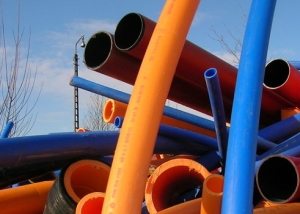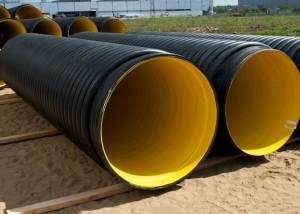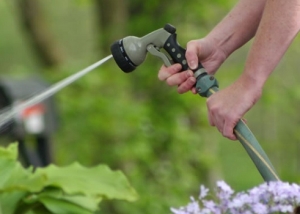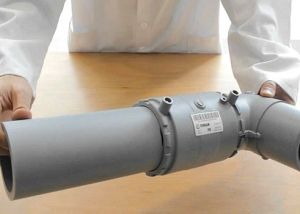When combining plastic pipes into a single system, special elements that relate to fittings are used. The choice of hardware depends on kind of pipesthe material from which they are made and their sizes. For plastic pipelines, parts from the same material are used. The range of applications of accessories made of polypropylene and other polymers is quite wide and diverse.

To connect polymer pipes, fittings from the same materials - PVC, polypropylene or polyethylene are most often used
Content
The main parameters of plastic pipes and fittings
In the manufacture of fittings, a wide variety of plastics are used. But mainly products made of PVC, polyethylene and polypropylene are in demand.
Positive qualities of accessories made of plastic: low weight, environmental friendliness (do not change the chemical composition of water), resistance to various aggressive compounds and corrosion, resistance to mechanical stress, ease of installation and durability (service life up to 50 years or more). Corrosion resistance is a very important quality, because metal parts are highly susceptible to rust and other types of destruction. Plastic parts have high ductility and flexibility. They are installed in systems with an operating temperature range of -10 ° C to +95 ° C. Also, the advantages of plastic include light weight, which makes it easy to transport them to the right place.
When installing polymer pipelines, some types of brass fittings are also used (couplings, taps), they also come in different diameters, with or without a protective coating.
Note! It is very important to select fittings from the assortment of the same manufacturer as the pipes. Otherwise, during the installation process, you may encounter the fact that the parts simply will not fit for one reason or another.
Plastic piping. Characteristics
Pipelines for the purpose are divided into: cold and hot water supply systems, central and individual heating, as well as for the transfer of various chemical reagents. In each of these systems, pipes made of polymers and accessories made of plastic are used.
Polypropylene pipes suitable for use in these areas are divided into three categories: PN10, PN20, PN25. The first two types are designed for pipelines with low pressure. Standard pressure indicators for them are 1-2 MPa, temperatures up to 80 ° C. Plastic in them is highly homogeneous. The PN25 category is reinforced and can easily withstand higher pressures and temperatures (up to 2.5 MPa and up to 95 ° C). Polypropylene products have smooth inner walls, which prevents the deposition of unwanted plaque.
Reinforcement of pipes and fittings: this procedure is used by introducing a stabilizing layer of aluminum or fiberglass into the composition of polypropylene. Thanks to the reinforcement, it is possible to lower the coefficient of linear expansion of the plastic and increase its impermeability to air.In addition, this plastic is stronger and can withstand more pressure, better retains its shape. The stabilizing layer is most often located outside and covered with a small layer of plastic. When welding a pipe that is reinforced with aluminum, it is necessary to clean it at the place where the seam will pass. With fiberglass reinforcement, such a procedure is not required. These two types of products do not have special price differences.
Accessories for plastic pipes and the pipes themselves are classified by three main indicators:
- Material grade.
- Diameter.
- Internal Pressure Resistance Index (SDR).
The brand depends on the material of the pipe, for polyethylene it is, for example, PE-80 and PE-100. These products are used only in the installation of plumbing systems (they are not used in heating), therefore only unheated water always passes through them. PE-80s are a very popular option for installation in a domestic environment and are designed for low pressure. PE-100 is used in systems where the pressure will be high (often in industrial fields).
The applicability of the pipe for a particular type of pipeline depends on the diameter - the greater the load on it, the larger the parts should be.

The suitability of the pipe for a particular type of network depends on the characteristics of the material taken for its manufacture, diameter and SDR
SDR is an indicator that determines the ratio of the inner diameter to the wall thickness of the product. The higher the SDR value, the stronger the product.
Important! The pipe and component can be connected the same way, regardless of whether they will be used to drain water or heating systems.
Types of fittings
All fittings for polyethylene and polypropylene pipes can be divided into three categories:
- Fitting.
- Shutoff valves.
- Additional fittings.
Fitting
A fitting is a connecting piece that enables the union of pipes in piping systems. The plastic fitting fixes in the places of bends, branches, the union of two pipes with different diameters, etc.
Fittings are divided into straight lines - for fixing pipes with one diameter, and transitional - for pipes with different diameters or from different materials.
Types of fittings:
1. Crossings - such fittings connect 4 pipes to each other. Such a spike can be carried out in two planes, but this is extremely rare, mainly in factories.
2. Couplings - used to connect two sections of a metal-plastic pipe or pipe with a fitting of equal diameter. They differ in the location of the thread and, if present, have a nut in their composition.

An assortment of fittings for each type of polymer pipe offers all the necessary parts for mounting systems of any complexity
3. Tees - used when branching a pipeline or changing the vector of its direction. Also divided into direct and transient. Tees can retract in one or two planes, as well as at an angle.
4. Corners are a very important detail. Without it, not a single installation takes place. Distinguish between straight and transitional corners. They can have a metal insert for switching from plastic to metal. Usually equipped with fasteners for fixing to the wall. Designed to create bends, for example, to the drain tank.
5. Plugs - used for airtight plugging of polyethylene and polypropylene pipes. The plugs may be threaded. They are used for temporary plugs (then some measuring device is installed in their place) and for permanent closure of the pipe. Plugs come in different diameters, depending on the application.
Locking hardware
There are four types of plastic shutoff fittings: taps, valves, manifolds and check valves.
1. Cranes - devices that overlap and regulate the pressure of a liquid or gas using a rotary part in the form of a cylinder or a circle. Valves for plastic pipes are reliable and easy to install.Also, such parts are quite versatile and are used in any pipeline systems. Ball valves are divided into:
- Full bore - in such a tap, the bore is comparable to the diameter of the pipe. The throughput is up to 99%.
- Standard cranes - throughput at the level of 70 - 90%;
- Partial bore - throughput - 40 - 70%.
2. Valves - have a spindle and spool with gasket. It blocks the flow with a smooth turn.
3. Collectors - bends of the main pipeline. They include valves with which pressure indicators are controlled.

Plastic cranes come in different types and quality products are not inferior in reliability to the usual brass
4. Check valves - parts that perform an emergency function. When a network breaks, they shut off the supply of water or gas.
Additional Products
Accessories for metal-plastic pipelines include such additional products: bends, expansion joints, fasteners, etc.
- mounting clips - a bracket that has an arched shape and is fixed to the wall.
- strips for mounting mixers - consists of two elbows. Inside the plank is brass coated and has a thread. The lower part of the strip has holes for attaching the desired element.
- bends - a part that is able to change the direction of the pipeline.
- contours - arcuate segments with extensions at their ends.
- expansion joints - compensate for the linear expansion of polymer pipes.
Selection of fittings by diameter
There are such indicators of the diameters of fittings and other accessories made of polypropylene: 20, 25, 30 and 40 mm. Fittings of this type are used when installing pipelines in residential premises. Engineers use fittings with diameters up to 110 mm in industrial plants.
Important! When choosing fittings for a pipe, you need to know its diameter exactly, so it should be measured in advance. You can also see the diameter on the product labeling. All quality samples necessarily have such data on the outer surface.
Many owners install pipes themselves. With the right fittings, this is much easier. Most often, when installing pipeline systems, plastic pipes PPRC are used. It is not difficult for them to choose the right fittings. The main thing is to carefully read the labeling and indicators of goods.

The fitting of any manufacturer is marked with information about the parameters, which must be carefully studied
Welding a plastic pipe with fittings
The main stages of welding:
- preparatory stage. For starters, the study of markings and the selection of the necessary tools and parts for the installation of the pipeline system;
- mapping of the pipeline;
- pipe cutting to the required sizes;
- at the final stage, the main work is done on welding pipes with fittings.
The soldering iron for welding must be equipped with special nozzles, without which it will not work correctly.
Important! Before proceeding to welding, it is worth cleaning the places of the fittings inlets. To do this correctly, it is necessary to remove aluminum foil if the pipe has an aluminum layer.
Pieces of pipe and fittings cut to the required sizes need to be heated with a soldering iron and pressed against each other for a certain time. As a result of this, fixation occurs. It is very important to tightly fix the parts. Do not shake, do not turn on its axis and do not pull, otherwise such a soldering may leak after installation.
The combined connection combines two options - welding and threaded. It is very important that the thread on the fitting matches the diameter of the pipe we need. Most often, this type of connection is used when installing home plumbing. Dismantling the pipes will be much faster with the help of a grinder. Old pipes need to be cut into pieces so that later it is convenient to get rid of them.
Plastic fittings have many advantages over its metal counterparts.Easy to install, durable and relatively inexpensive. A huge assortment of plastic pipe fittings has taken the forefront and gained popularity when installing pipelines in residential-type rooms. The variety of these products does not stand still and new parts are constantly being produced, so they can be selected for a variety of purposes.






